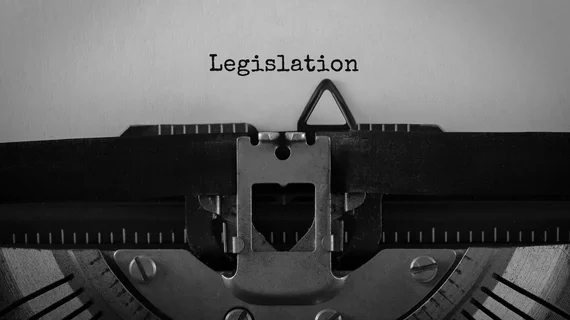Radiologists, anesthesiologists and emergency medicine physicians implore feds to finalize rule
The American College of Radiology and other specialty societies are imploring the federal government to release a long-delayed final rule aimed at fixing flaws in the No Surprises Act.
Last October, the Centers for Medicare & Medicaid Services announced proposed updates to the landmark law, launched in 2022 to protect patients from receiving unexpected medical bills. The updates sought to, among other things, improve communication between payers, providers and the independent arbitrators who settle disputes between the two over out-of-network reimbursement.
However, nearly one year later, the Biden administration has yet to issue the final rule. Leaders with the American College of Radiology, American Society of Anesthesiology and American College of Emergency Physicians expressed “significant concern” that the rule is still not finalized.
“We believe that there are vital reforms included in this regulation that will help improve some of the current deficiencies in the federal [independent dispute resolution] process,” ACR, ASA and ACEP board leaders wrote in an Aug. 8 letter to leaders at three federal agencies charged with implementing the rule. “Therefore, we strongly urge the departments of Health and Human Services, Labor and Treasury to release the final rule as soon as possible (but no later than September 1, 2024), with all the policies becoming effective no later than 30 to 60 days from the date of publication in the Federal Register.”
The IDR Operations Rule was first published on Nov. 3, with the departments accepting public feedback through Jan. 2, later extending the comment period to Feb. 5. Some of the policies in the rule had proposed effective dates beginning on or after the later of either Aug. 15 or 90 days after the effective date of the final rule. Other policies were to take effect Jan. 1, 2025. This set a “strong expectation” that the feds would release the rule by midsummer 2024, ACR et al. wrote. It came as a “great surprise and disappointment to our organizations” when the Spring 2024 Unified Agenda showed that the rule won’t be released until November. This date is a rough estimate, leaving the possibility of an even later launch, the societies wrote.
The delay comes as the federal independent dispute resolution is experiencing an “extremely unstable period.” Many insurers are not following requirements, IDR entities are using incorrect information to make payment determinations, and the process has been plagued by delays and “general confusion.”
“This instability is putting in jeopardy our collective ability to meet the core objective of the No Surprises Act: to protect patients and keep them out of the middle of billing disputes,” ACR Chair Alan H. Matsumoto, MD, and colleagues wrote. “We need some stability in the federal IDR process, and this rule could not come soon enough.”
The societies noted that some insurers are declining to even take part in open negotiations or acknowledge receipt of the process starting. They also highlighted ongoing and longstanding problems with the qualifying payment amount—a figure that helps determine cost sharing for services included in the balance-billing protections. Inconsistences in QPA determinations remain a “significant issue,” with insurers “repeatedly miscalculating” this figure.
“Therefore, it is absolutely essential that the departments institute additional safeguards and requirements to ensure that the QPA is calculated correctly,” the societies wrote. “We also believe that the departments should require insurers to display the methodology used to calculate the QPA.”
Amid insurers’ alleged flouting of the rules, ACR, ASA and ACEP want the administration to create “stronger incentive and enforcement mechanisms.” They’re “strongly” encouraging the departments to begin issuing civil monetary penalties, where appropriate. The American College of Radiology and others have received reports from members that, even when they win a dispute, payers are refusing to pony up what they owe within 30 days, “if at all.” These stated instabilities have “been in place for a long time,” and they contend physician specialists cannot wait until next year for reforms to become effective.
They want “batching” provisions—allowing physicians to group together similar claims, rather than submitting them one at a time—to take effect no more than 60 days after the rule is finalized. Radiologists, anesthesiologists, and emergency medicine physicians also want new disclosure requirements to take effect “immediately” once the rule is finalized, with the feds releasing detailed guidance on navigating these changes.
“The proposed effective dates in the rule provide too much of a gap between current policies and what we believe to be much needed improvement in the IDR process,” they wrote. “‘The future success of the IDR process depends on these operational improvements being implemented expeditiously,” they added later.

